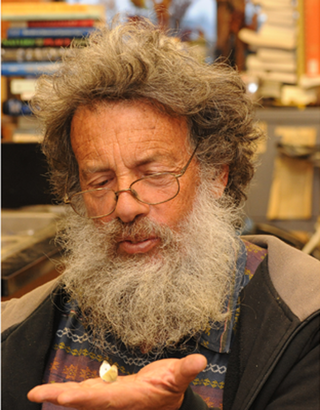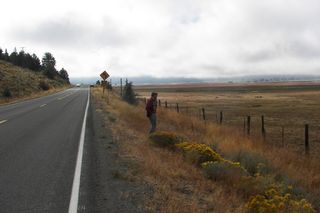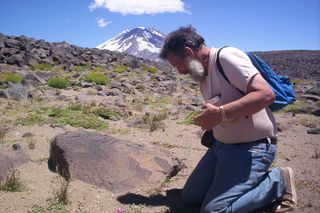Passion for Butterflies Becomes A Study in Climate Change Impact

This Behind the Scenes article was provided to LiveScience in partnership with the National Science Foundation.
Arthur Shapiro has been collecting butterfly data for more than 40 years, and despite the high altitudes, rigorous walks and often uncooperative weather, he’s still going strong, exploring mountains across central California, pen and notebook in hand.
A distinguished professor and scientist, his interest in nature and butterflies was sparked in his childhood.
Due to an unpleasant family environment, as a child, Shapiro often escaped to the woods and fields close to his home in Philadelphia. There, he developed a passion for phenology—the study of periodic animal life cycle events and how these are influenced by variations in the fauna.
Shapiro excelled in school and received a scholarship to attend the University of Pennsylvania, where he graduated with a B.A. in Biology. Soon after completing his Ph.D. in Entomology from Cornell University, Shapiro taught ecology and field biology at Richmond College of the City University of New York.
In 1971, Shapiro began teaching in the Department of Evolution and Ecology at the University of California-Davis. Since then, he has been teaching and collecting data on butterflies.

Shapiro established 11 sampling sites that comprised of a variety of habitats, stretching from the Suisun Marsh to Donner Pass to the Sierra Valley.
Sign up for the Live Science daily newsletter now
Get the world’s most fascinating discoveries delivered straight to your inbox.
The work within the sites began as a five-year study that focused on short-term weather impacts. Soon, however, the study became an open-ended, long-term project that incorporated the impact of climate change.
“It became evident with time, that there were effects occurring on different time scales: short, medium, and long,” said Shapiro.
In the more than 40 years since the sampling sites were established, Shapiro has completed more than 6,300 trips to the 11 sites. He has entered about 130,000 individual records of 160 butterfly species and subspecies.
Through an NSF Biological Databases and Informatics grant, Shapiro and his team created a digital database covering more than 35 years of field records.
With the digital database and using statistical tools to separate short-term effects from long-term effects, Shapiro and his team have found significant long-term trends by studying the changes in the geographic and altitudinal distribution of butterflies.

At low-elevation sites, near sea level, increasing urbanization and landscape changes have heavily impacted butterfly populations. Butterflies have decreased in abundance and distribution due to fragmentation of their habitats.
With climate warming, butterflies at the highest-elevation site are appearing with increasing frequency. Those that normally breed at 7,000 feet now breed at 9,000 feet. The site is gaining diversity because the butterflies are moving uphill. This upslope movement can cause a time-lag problem because plants move more slowly than the butterflies. If butterflies do not have the plant resources they need, they cannot breed at those higher elevations.

Shapiro has also carried out fieldwork on the High Andes in Argentina and adjacent countries in South America. His work there has a different focus. Whereas in California, he frequently revisits specific sites, in the Andes and Patagonia he travels to different places to map butterfly distributions, because distributional records are relatively scarce.
“Right now, the two people who are most active in doing this are an Israeli, Dubi Benyamini, and me,” said Shapiro
However, Shapiro is not only a field researcher. He has been using genetic markers to trace historic movement of species and populations as the climate and the topography change.
Through phylogeography, Shapiro is trying to reconstruct the history of the high-mountain butterfly faunas both on the West coast of North America and in the southern parts of South America, such as Argentina and Chile. By reconstructing the history of these faunas, where they came from, how they moved and when, scientists and researchers can make predictions as to how the fauna will respond to climate change in the future.
“The past is the key to the future,” said Shapiro.
While Shapiro has invested his efforts in other areas and studies, being surrounded by nature is one of the most enjoyable things.
“I have always enjoyed being in the outdoors, and I still do,” said Shapiro. “I am not getting any younger. I am 66 years old, so it seems like mountains get higher every year because they are harder to climb, but I do it.
“I want to continue doing this until I am no longer physically capable of doing it,” said Shapiro.
Editor's Note: The researchers depicted in Behind the Scenes articles have been supported by the National Science Foundation with funding basic research and education across all fields of science and engineering. Any opinions, findings, and conclusions or recommendations expressed in this material are those of the author and do not necessarily reflect the views of the National Science Foundation. See the Behind the Scenes Archive.

